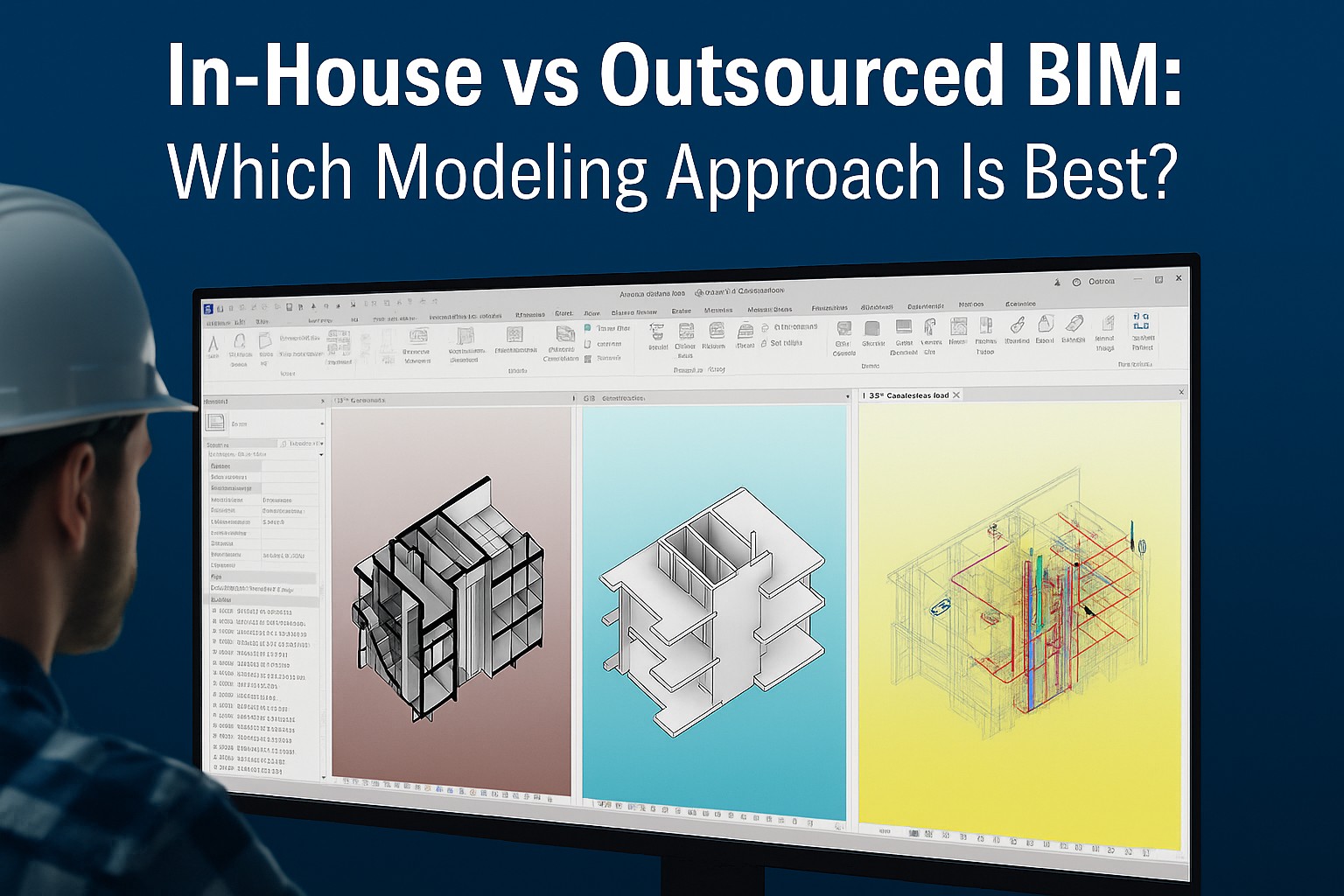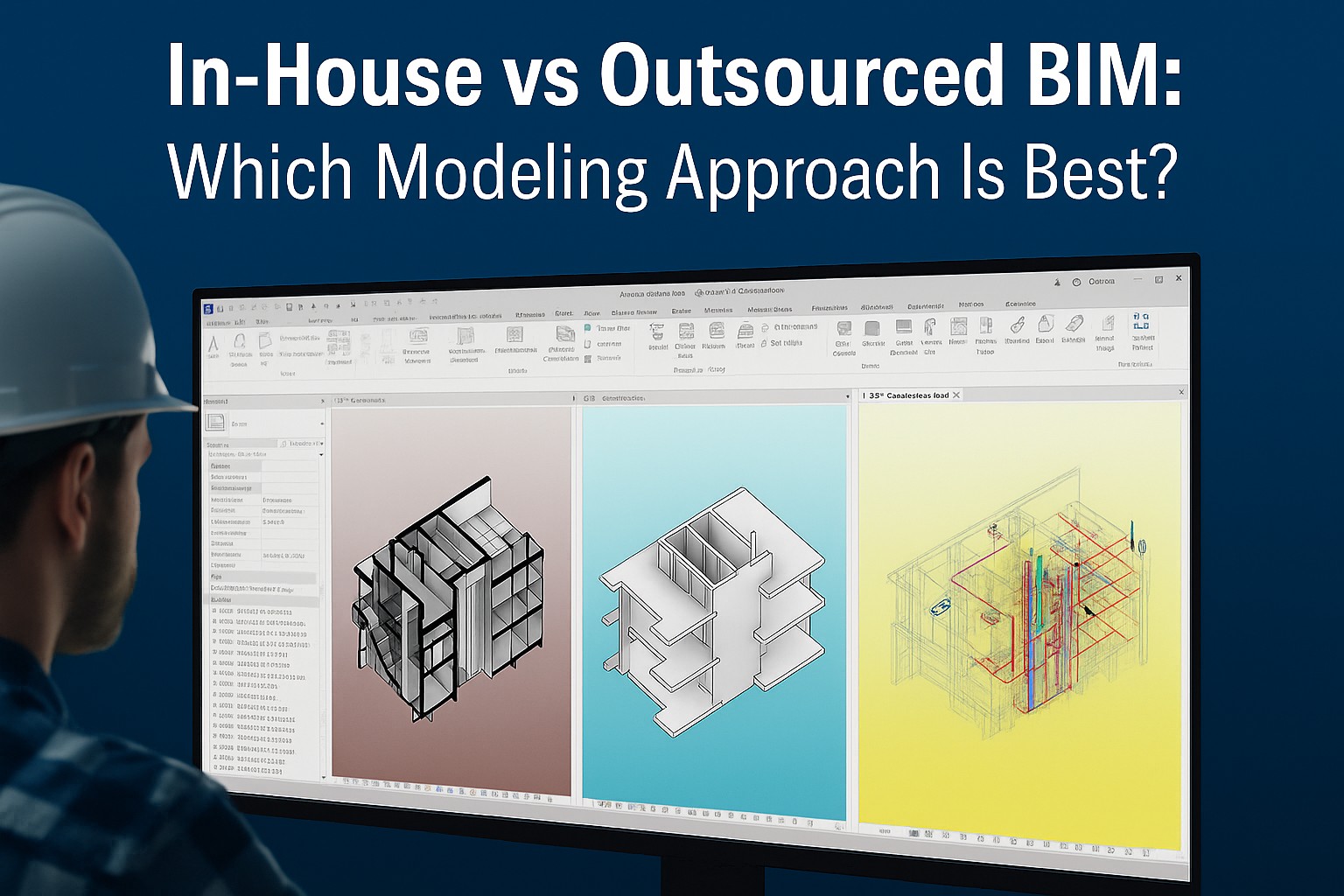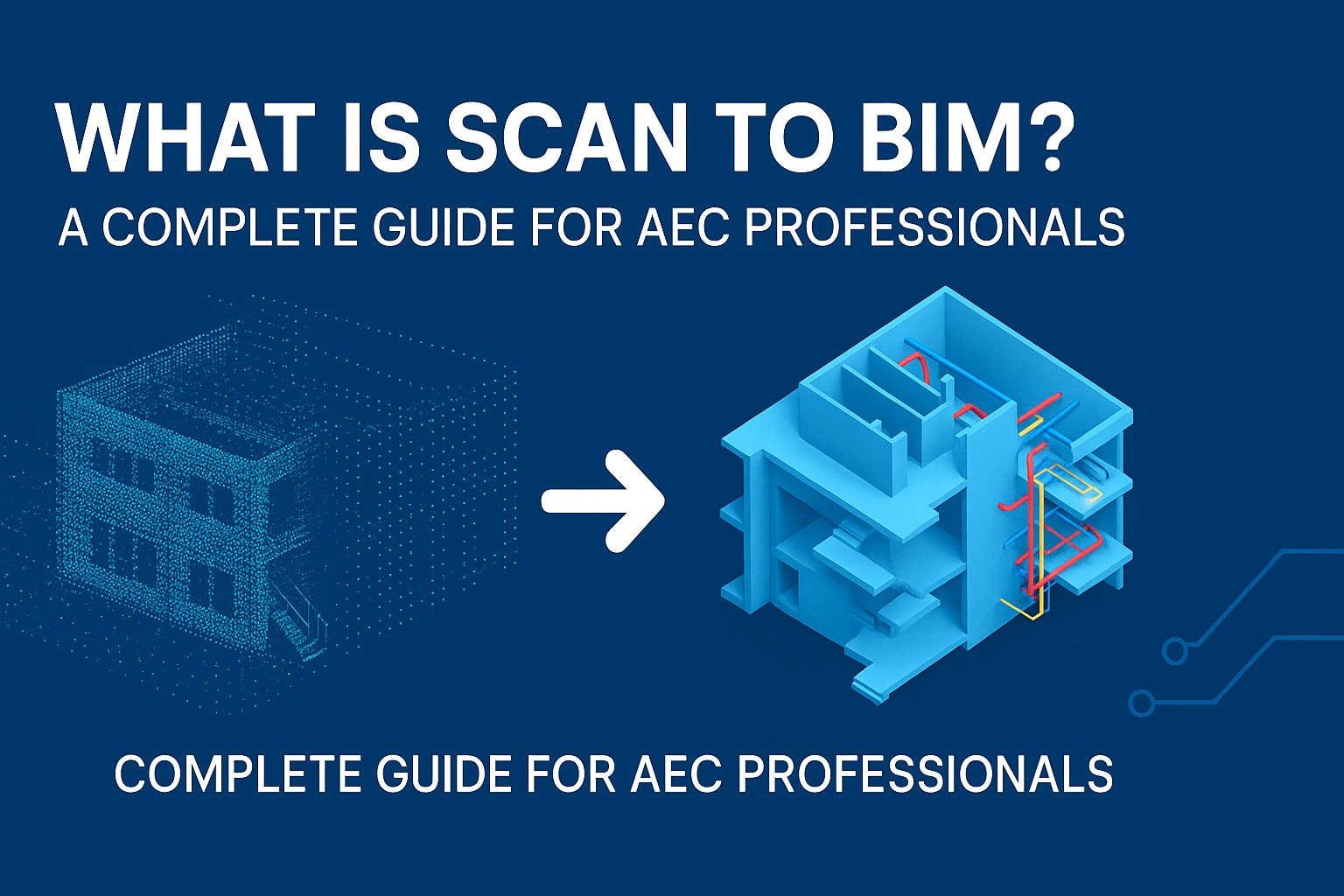Introduction: The Rising Demand for BIM Services
As the AEC (Architecture, Engineering, and Construction) industry embraces digital transformation, Building Information Modeling (BIM) has become a cornerstone for smarter planning, efficient execution, and long-term facility management.
But with this growing demand comes a crucial decision:
Should you build an in-house BIM team or outsource to experienced professionals?
Choosing the right BIM modeling approach can significantly impact your project timelines, budget, and overall quality. In this blog, we’ll explore both in-house vs outsourced BIM options to help you make an informed choice.
In-House BIM Modeling: Overview & Benefits
In-house BIM modeling involves building and maintaining your own team of BIM experts — modelers, coordinators, and engineers — who work under your roof.
✅ Pros of In-House BIM
- Full control over workflows, data, and quality.
- Better integration with internal teams like architects, engineers, and project managers.
- Quick response time for changes and decision-making.
- Stronger alignment with your organizational culture and standards.
❌ Cons of In-House BIM
- High hiring, training, and retention costs.
- Longer ramp-up time to build a skilled team.
- Scalability issues during peak project loads.
- Requires investment in software licenses and hardware.
Outsourced BIM Services: Overview & Benefits
Outsourced BIM modeling involves partnering with a specialized BIM service provider who offers dedicated teams or project-based support.
✅ Pros of Outsourced BIM
- Lower operational costs (no need for in-house infrastructure).
- Access to experienced and certified BIM professionals.
- Faster turnaround time due to streamlined workflows and scalability.
- Flexible engagement models — hire BIM modelers on-demand.
❌ Cons of Outsourced BIM
- May have communication gaps due to time zones or cultural differences.
- Limited direct control over daily progress.
- Data security concerns if not managed properly.
In-House vs Outsourced BIM: Side-by-Side Comparison
|
Criteria |
In-House BIM Modeling |
Outsourced BIM Services |
|
Cost |
High (salaries, software, hardware) |
Lower (pay-as-you-go or project-based pricing) |
|
Quality Control |
Full internal control |
Depends on partner’s expertise and workflow standards |
|
Scalability |
Limited by hiring & onboarding pace |
High — can scale up or down as needed |
|
Turnaround Time |
Slower for new hires or during peak loads |
Faster due to ready teams and parallel task handling |
|
Collaboration |
Seamless with in-house teams |
Requires proactive communication and project management |
|
Technology Access |
Needs regular investment in upgrades |
Access to latest tools without capital investment |
|
Best For |
Long-term, complex, high-budget projects |
Short-term, fast-paced, budget-sensitive projects |
Real-World Use Cases
? When In-House BIM Makes Sense
Case: A large construction firm regularly handles mega projects (e.g., hospitals, airports).
Need: Long-term, integrated collaboration between architectural and BIM teams.
Result: Building an internal BIM department ensures consistency, IP security, and smooth communication.
? When Outsourcing BIM Delivers More Value
Case: A mid-sized architectural firm lands a large-scale international project but lacks BIM capacity.
Need: Fast, scalable modeling support with Revit and Navisworks coordination.
Result: Partnering with a BIM outsourcing company allows them to meet deadlines without overloading internal staff — and without the need to hire full-time resources.
How to Decide: In-House vs Outsourced BIM?
Choosing the right BIM modeling approach depends on multiple factors:
✅ Go In-House If:
- You have long-term BIM needs across multiple projects.
- Your project requires tight coordination with internal teams.
- You can afford to invest in hiring, training, and software.
✅ Go Outsourced If:
- You need fast turnaround and cost efficiency.
- Your workload is project-based or seasonal.
- You want to access global BIM talent without overhead costs.
Final Thoughts
There’s no one-size-fits-all answer when it comes to choosing between in-house vs outsourced BIM. The right decision depends on your project scope, budget, team capacity, and long-term digital strategy.
If you're a growing firm looking to stay competitive without inflating overhead, outsourcing BIM services can offer scalability and expertise. For firms handling large portfolios or sensitive projects, building an in-house BIM team may offer better integration and control.
Either way, the goal is the same: delivering accurate, efficient, and coordinated building designs.





